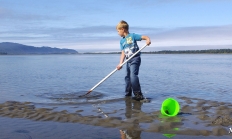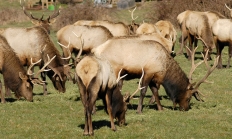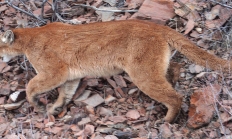
Search myodfw.com
Chris Kern, Region Manager Fisher research in southern Oregon Fisher are a Species of Greatest Conservaion Need in Oregon's State Wildlife Action Plan, and ODFW is actively conducting research to understand fisher occupancy and distribution east of I-5, as well as that of their competitors and predators. Wildlife Research staff maintained 30 baited camera traps in the Cascade-Siskiyou National Monument and Southern Cascades. The cameras were deployed in mid-September on U.S. Forest Service and Bureau of Land Management lands in areas with proposed habitat management efforts. The goal is to evaluate how these land alterations influence changes in mesocarnivore occupancy






Cole Rivers Hatchery is the largest producer of hatchery fish on the coast of Oregon. Almost all of the fish production at Cole Rivers is done to mitigate for the fish production that was lost when miles of high quality fish habitat was blocked by Applegate Dam (Applegate Reservoir) and William Jess Dam (Lost Creek Reservoir).
This is your one-stop platform for learning how to hunt and fish in Oregon. Register here to participate in one or more of the many statewide workshops offered to adults. Enjoy the great outdoors even more by building your confidence and expanding your knowledge! Look no further: hunter safety courses and field days Choose between a conventional in-person course or complete one of the online education courses plus an in-person field day. Sign up for a location, date and time that works best with your schedule. Hunter safety education events are offered year-round and taught by certified volunteer instructors statewide


When preparing your turkey for the pot, you can either skin it or pluck it. Because wild turkeys have such thin skin, many hunters prefer skinning their turkeys as it ’s must faster than plucking the bird. Pick up where you left off gutting the bird Simply continue making the cut in the skin from the body cavity, all the way up the breast bone to the base of the neck. The skin is thin enough that you often can peel it free from the breast meat. Slide your thumbs under the skin and working it up and away from







